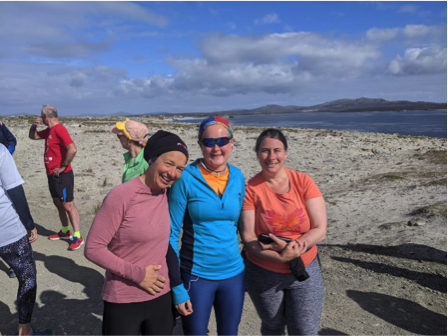Barriers (Part 7)
Posted by Jeremy Windsor on Mar 10, 2023
Traditionally, mountain medicine has mostly focused upon the negatives - often developing ways of managing illnesses and injuries that occur in the mountain environment. But more recently reseachers have started to explore the positives. Recognising the many health benefits of mountain activities, many are seeking ways to encourage more people to get out into the hills. However it's clear that there are a lot of barriers that stand in the way. How can these be overcome? Much can be learnt from the experience of others. In this post we'll focus upon the incredibly popular Parkrun movement and the factors that affect participation...
Looking at the statistics, it looks like Parkrun organisers have cracked it - more than 300,000 adults come together each weekend to take part in a 5km run or walk. It's popularity stretches around the world with more than 2200 seperate events taking place in 23 countries. If that wasn't enough, several Parkrun-related studies have demonstrated that the organisers are able to reach vast numbers of people who otherwise don't tend to exercise. But there's a problem - approximately 40% of those who register with Parkrun are quickly "turned off".
In 2019, researchers were able to survey almost 6000 people in Australia, Ireland and the UK who had registered on the official website but had never really got stuck in - they'd either never turned up or had done it once and decided not to go back. What did they find?
Those who didn't commit were more likely to be young (16-34 years), female and less physically active.
To work out the reasons why they didn't engage, the survey participants were asked to choose up to 3 options from a list. Many of the reasons centred around practical issues - an inconvenient start time (24%), limited availability (21%), childcare obligations (10%) and a distance that was too far to travel (7%). The presence of pain, injury or illness (12%) also played a part, so too, a perceived lack of fitness (13%). Confidence was a factor for some, with 9% not being sure of what to expect, 9% not wanting to go alone and 5% concerned about running in public.
What does this mean for those who want to get more people into the outdoors? Well, there's clearly some practical issues that need to be addressed. Activities need to take place at a convenient time, be easy to reach and fit around other commitments. The authors highlight the need for Parkrun to encourage families and friendship groups to participate together to try to address this. However, despite all their efforts the researchers were realistic and simply stated that the 9am start time might just not suit some people.

Parkrun is free, weekly and takes place on Saturday morning's throughout the year - there's even one on the Falkland Islands!
Pain, injury and illness are clearly barriers to activity. Parkrun has gone some way to address this by collaborating with the Royal College of General Practitioners and developing a GP Practise Staff Toolkit that sets out to encourage both patients and staff to take part.
Four reasons - feeling too unfit, not being sure what to expect, not wanting to go alone and concern about running in public, were far more commonly reported in women than men. In some of these factors, the difference was almost 3 fold. According to the authors this could be attributed to low levels of self efficacy. I have to be honest, I had to look up what this meant. Essentially, this is an individual's belief in his or her capacity to complete an activity. Commoner in women, low levels of self efficacy have been targeted by campaigns such as Sport England's "This Girl Can" campaign, but clearly there's a lot more that needs to be done.
To end on a positive note, the authors found that once someone had attended their first Parkrun many of the barriers that had previously stood in their way started to diminish. Buoyed by a friendly and inclusive atmosphere, not to mention the pleasure of getting out with friends in the fresh air, led to many of those attending coming back for more!
The first of the "Barriers..." posts can be found here.
Thanks to Kitty Duncan for supplying her photograph of her Parkrun in the Falklands. An account of her time on the islands can be found here.
Barriers (Part 8) can be found here.
Thanks for reading this post. If this is your thing why don't you take a look at other posts on the blog? Better still, why not join the British Mountain Medicine Society? More information can be found here
For more information about the University of Central Lancashire's Diploma in Mountain Medicine (DiMM) take a look at this.
Comments
Leave a comment.
Leave a comment.



 )
)